Lawnmowers are here to stay, even in the unforeseeable future. Whether you have a walk-behind or riding lawnmower, cutting grass to a desirable height helps keep homesteads tidy and attractive. However, such is a feat that is only possible with well-maintained components/parts. You can choose to replace worn-out parts such as tires, belts, and blades at home or contact a lawnmower service provider for help. The most important thing is that your machine should be in great working condition so that as soon as spring or summer sets in, you are ready and set to mow. In this post, we answer the question:
How long do lawnmower tires last?
A good lawnmower tire should last at least up to 5 years, depending on the usage.
The lifespan of tires depends mainly on the material, usage, and mileage. If you use your lawnmower a lot, or the terrain is hard for your tires, the life span will be shorter. You can expect a longer tire life when you use rubber tires instead of plastic ones.
According to several sources featuring opinions of top lawnmower service providers and manufacturers, treating a lawnmower as a vital home investment improves its stead and functionality. As a result, tires would also last longer while serving you better. According to J.D Power and Associates-a renowned marketing company, the lifespan of mowers ranges between 7 to 10 years. However, that could be higher for robotic lawnmowers. Maintenance and brand considerations remain pivotal in ensuring the longevity of tires. If you are a homesteader or a handyman, we know how much interest you want to vest in this topic. Unlike mower blades, investing in excellent tires is costlier. Keep reading to learn more.
Contents
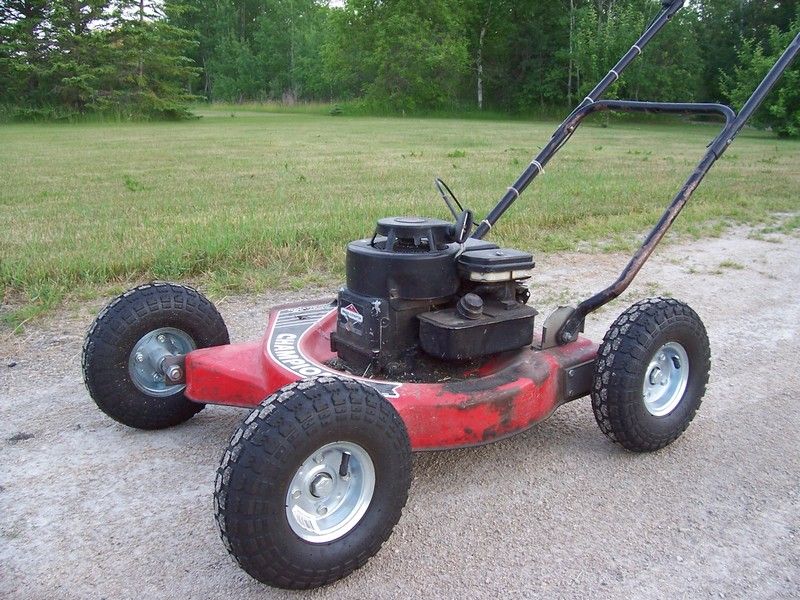 1 ● Buy original tires
1 ● Buy original tiresLet’s face it. There is nothing like repair with a tire burst unless you take it back to the factory for recycling. Then, you can whet blunt lawnmower blades or even clean clogged gas filters. However, with tires, the approach to maintenance is different. You can take precautions that will help prevent dry rot, but there is only one way about it when age catches up with tires. It is always that time you replaced old worn-out tires with brand new ones.
Of course, you should expect new tires to have a good tread for good traction on the surface, but that’s a story for another day.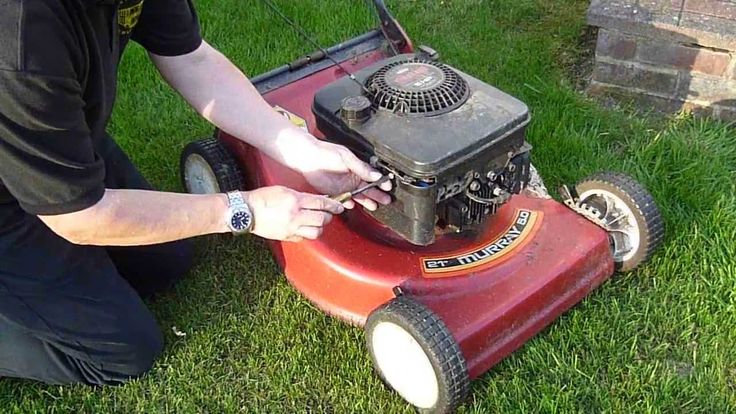 We will look at factors to consider when buying tires later on; meanwhile, the following signs should get you shopping for spare tires:
We will look at factors to consider when buying tires later on; meanwhile, the following signs should get you shopping for spare tires:
Most people think that dry rot only takes place in wood but that’s not the case. It is something you can also spot in lawnmower tires. Whether you use push or riding mowers, check them regularly for signs of dry rot. Cracks on the sidewall are often the main signs of dry rot, especially after many years of use. Take note that ignoring signs of dry rot puts your machine at risk of damage. You risk a tire burst or tires falling apart. Most importantly, your mower becomes very unreliable as soon as dry rot occurs because tires will start leaking air out.
Also, think about a situation where you are mowing lawns at high speed then a dry rot causes a sudden tire burst. If that happens, you could end up rolling down a steep lawn with the machine tumbling in tow. The rest would be a story for another day. However, most tire bursts will only render your mower immobile until you install new tires.
Now, before we move on to the next sign of worn-out tires, you may be asking this question: Can you protect tires from dry rot? The answer is yes. Because regular check-up is not enough, you should do the following to minimize incidences of dry rot:
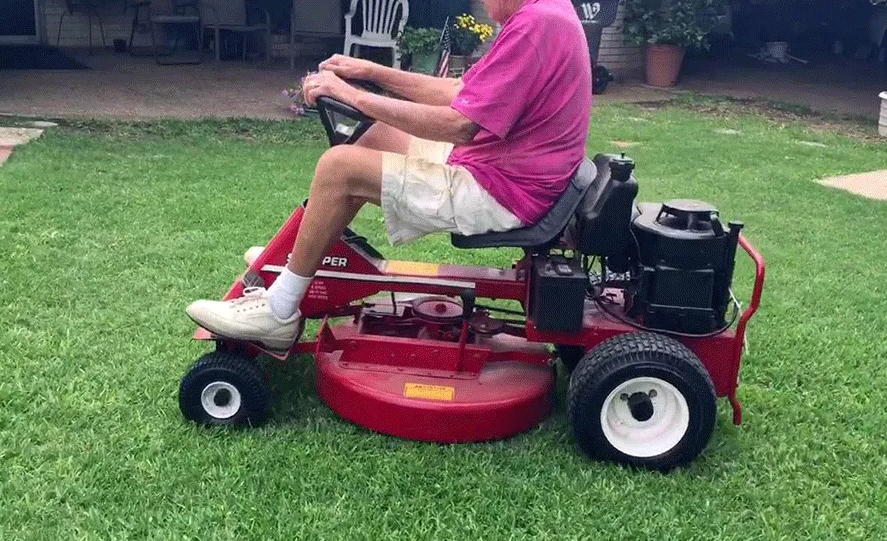 In addition, tires lose tread hence the risk of rotting. The catch here is that you should always replace tires with low treads with new ones.
In addition, tires lose tread hence the risk of rotting. The catch here is that you should always replace tires with low treads with new ones. Another sign of worn-out tires shows up when a lawnmower starts wobbling. While mowers should wobble a little because it is a design specification, too much of it should sound an alarm. When you compare wobbling tires and a bad haircut, you realize there is a bigger problem than it seems when it has to do with lawnmowers.
If it is not a loose axle nut causing the wobble, the chances are high that uneven tire tread is the problem. You should, therefore, replace worn-out tires immediately. Sometimes problematic wheels can be the reason for wobbling. Thus, always conduct a rigorous check to rule out such a possibility before buying new replacement tires.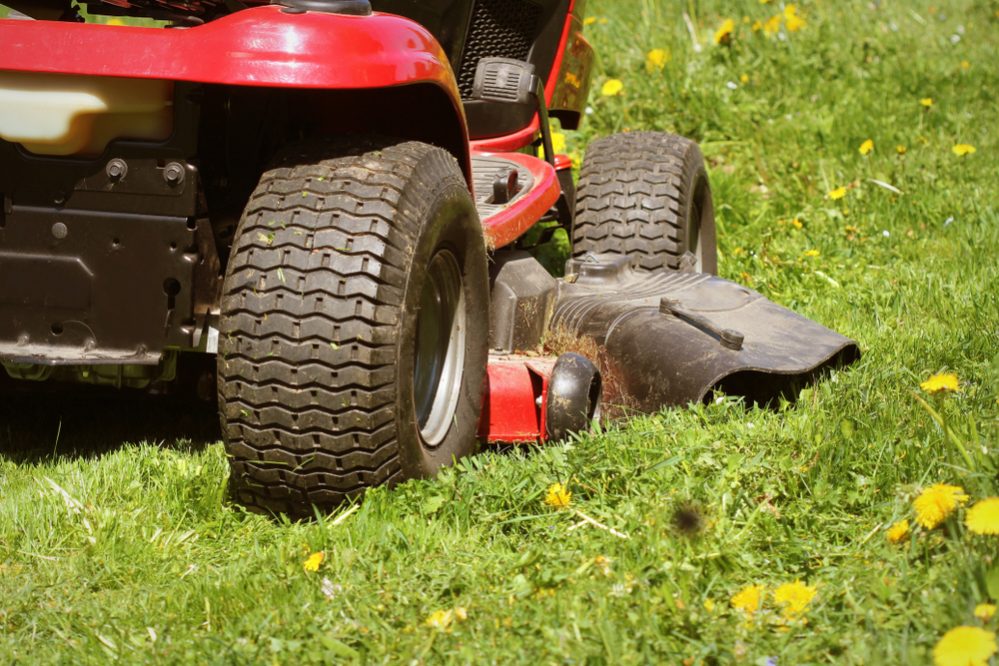
Signs of dead tire tread lack traction, especially on wet surface/grass, and poor traction on a dry surface. To determine whether your tires are good or bad, inset a coin into the groove or use a tread gauge. It is something you should do regularly before deciding whether to buy new tires or not. Also, the dead tread is likely to cause dry rot. But that’s something different. Causes of dead tire tread are things we also wanted to help you explore. They include:
 It also ensures an even and proper contact patch.
It also ensures an even and proper contact patch. The danger with shallow tread is that your mower will lose traction and become slow. You don’t want to risk mowing grass in snowy or wet conditions with worn-out treads lest you risk a dangerous skid.
Do you fill the tires often with pressure? Do you spend several minutes refilling pressure? If the answer to these questions is yes, then chances are high that tires on your lawnmower have a hole(s).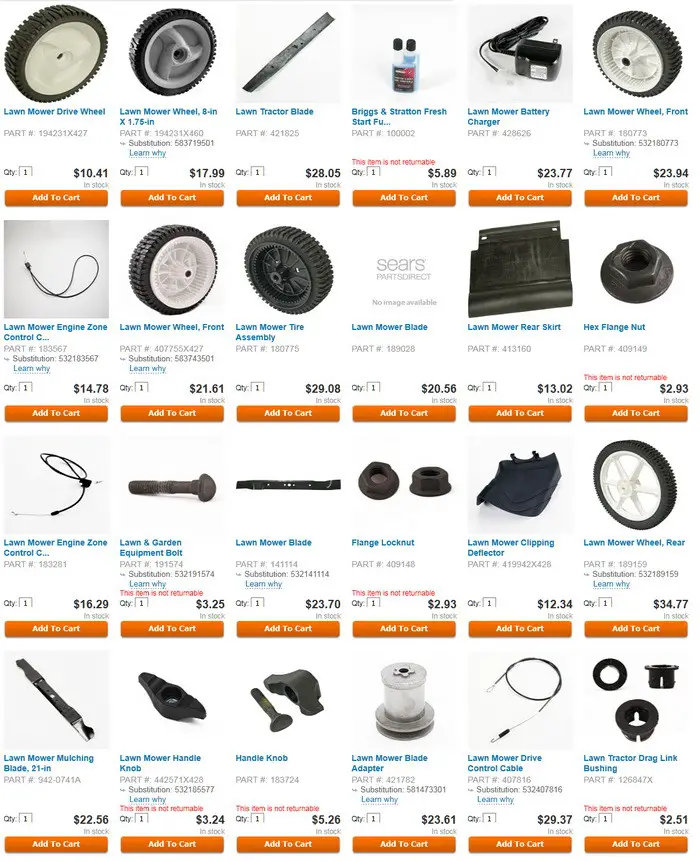 You should, therefore, consider patching them up using a tire sealant or buy replacement tires. The catch here is that while is it is natural that tires lose some pressure when riding or pushing mowers, many homesteaders say they go for a year without having to pump more pressure.
You should, therefore, consider patching them up using a tire sealant or buy replacement tires. The catch here is that while is it is natural that tires lose some pressure when riding or pushing mowers, many homesteaders say they go for a year without having to pump more pressure.
The next question you would probably ask is how then can one make lawnmower tires last longer? Well, we did some homework on that too and found out that to make your tires durable, you should do the following:
You should not expect tires on your lawnmower to last long if you don’t buy original ones. So, you may want to ask further, how does one know he or she is putting money on the best tires? Well, whether you choose to go for Kenda Turf tire brands or Carlisle Turf lawn tires, quality products from reputed manufacturers will never disappoint.
Another way of ensuring tires on your lawn mower last longer is by storing them properly.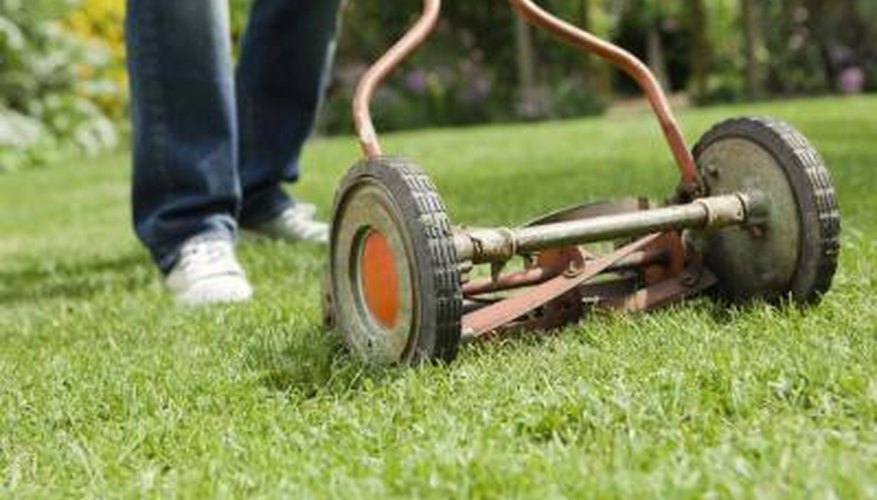 Of course, you are not going to remove them every time you park your machine. Rather, if you don’t have a motor garage in your backyard or house, we advise constructing a shade specifically for keeping your lawnmower. We indicated earlier that tires are likely to dry rot when exposed to direct sunlight, so always ensure they are in a cool shade.
Of course, you are not going to remove them every time you park your machine. Rather, if you don’t have a motor garage in your backyard or house, we advise constructing a shade specifically for keeping your lawnmower. We indicated earlier that tires are likely to dry rot when exposed to direct sunlight, so always ensure they are in a cool shade.
For machines to serve their purpose for long, proper care and maintenance are important. Thus, when it comes to ensuring the longevity of lawnmower tires, you should always check them for wear and tear. But here is the catch. If it is not replacing worn-out tires, is it possible to maintain them? Well, tire maintenance is possible. First off, you must ensure they always have ideal pressure and are properly aligned to avoid uneven wear of the tread. Secondly, retreading old tires is a maintenance practice that works. We will explain how to retread tires shortly.
Tires are made of rubber, and it means they can react with some chemicals.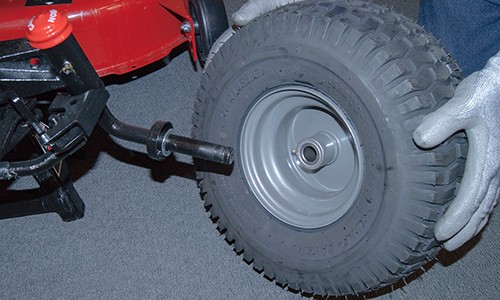 It is why; you should avoid using harsh chemicals when washing your lawnmower. If you don’t have access to the recommended cleaners/washing detergents, use clean water.
It is why; you should avoid using harsh chemicals when washing your lawnmower. If you don’t have access to the recommended cleaners/washing detergents, use clean water.
You don’t want to overload your lawnmower with tools because it will affect its optimal performance. If your machine does not come with a user manual giving a specific load limit, consult its manufacturer for advice. Overloading tires reduce their life span. Even worse, it always has a negative impact on the axle, which will push the cost of lawnmower maintenance higher.
Mismatch tires on a push lawn mower will not only affect its optimal performance but also make mowing feel like pushing against a brick wall. We know that sometimes it can be difficult finding an exact match of original tires on your mower, but not entirely. Even with limited edition mower brands, having the right tire measurement should save you from the stress of having to replace worn-out tires often. In addition, matching tires means going for the same tread quality, width, diameter, and height when looking for the best spares.
In addition, matching tires means going for the same tread quality, width, diameter, and height when looking for the best spares.
You may want to ask, why is using mismatch tires a bad idea? Well, tires that do not match with the original ones dimensionally do wear out unevenly. You can only imagine how difficult it would be working with such a mower. Talk less about the possibility of a tire blowout and regular puncture.
Making sure tire pressure remains optimal cuts for a whole topic. But let’s make it simple for you. When tire pressure is optimal, you realize faster mowing, thanks to machine efficiency. Having enough pressure in lawnmower tires guard against uneven wear and tear, thus, if you do not know to gauge it correctly, seek help from an expert. But with most tires coming with an instructional manual as part of after-sales services, keeping pressure in your lawnmower tires optimal should not be rocket science.
Another practice that will breathe long life into the tires of your lawnmower is rotating them after, say, 6000 miles. You can check into lawn mowing service to get help with tire rotating or do it in your home garage.
Tire inspection may sound obvious but very crucial. If you hardly check tires on your lawnmower tires for dry rot or tread wear, you could end spending unnecessarily on a new set. When inspecting these vital components of your mower, look out for cracks, sharp objects, pressure levels, bulges, stones, glass, screws, and nails.
You don’t want to ignore the possibility of these objects getting attached to the tires in the cause of mowing and risk unprecedented blowout or puncture. Therefore, you should conduct a rigorous check before mowing to ascertain the machine is safe for use and afterward before storing your mower.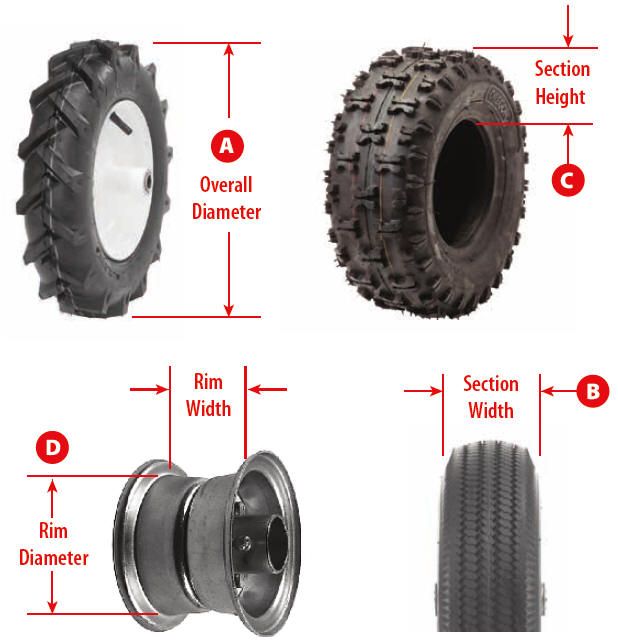 It is a proven way of prolonging tire lifespan.
It is a proven way of prolonging tire lifespan.
Did you know you can retread tires of your lawnmower to improve their quality of grip? Yes, tire retreading is and should be part and parcel of care and maintenance. It may not be an easy task, especially for those who think it is a tedious process, but it’s worth giving a try. Retreading tires will make them look as good as new, and that means easy mowing all the way.
For those reading about retreading mower tires for the first time, it is not rocket science. You need a few tools and items to do it right. A string, 0.5-inch screws, screwdriver, string, and scissors/snips are all you need to get started retreading. The process of retreading involves the following:
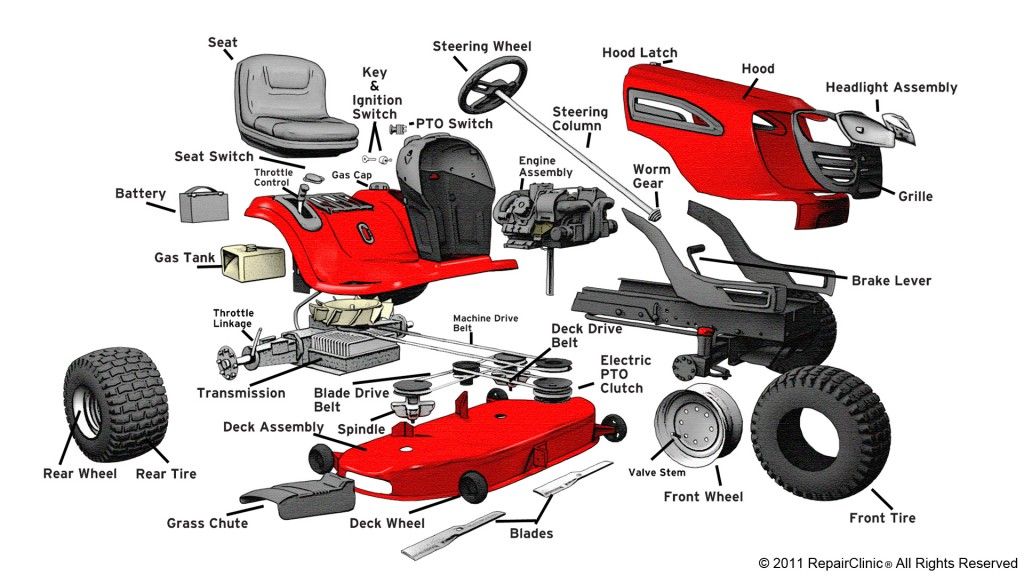 In the same way, cut treads on the bicycle tires so that they are a perfect fit as those on the mower’s tires.
In the same way, cut treads on the bicycle tires so that they are a perfect fit as those on the mower’s tires.You should, however, note that retreading tires is only a short-lived way of prolonging their lifespan. Professional tire maintenance demands that you replace worn-out tires as soon as tread loses traction. While retreading might help, therein is a danger of poking holes into tires.
In the end, how long tires on your lawnmower last depends on maintenance and care. You may have suffered a tire blowout a few times, but the question is what caused it. The catch is that while this post has walked you through the nattiest and grittiest of lawnmower tires, especially how to make them last long, everyone is a culprit of circumstance. After many years of service, mowers begin to experience wear and tear. If it is not the blades, then tires will be slowly losing traction.
The catch is that while this post has walked you through the nattiest and grittiest of lawnmower tires, especially how to make them last long, everyone is a culprit of circumstance. After many years of service, mowers begin to experience wear and tear. If it is not the blades, then tires will be slowly losing traction.
Moreover, remember that when replacing worn-out tires becomes inevitable, don’t just do it to save time. Rather, replace old tires with a new and original set. Take note that variation in tire dimension, however small, can have a negative impact on the optimal performance of your lawnmower. Thus, you should always check the product label and read the user manual to guide your purchase. If need be, consult lawnmower service providers or manufacturers for professional tire care and maintenance. Nothing would put the lifespan of tires at risk, like ignorantly buying mismatching spares or thinking dry rot is a normal occurrence.
We didn't find the posts for that URL.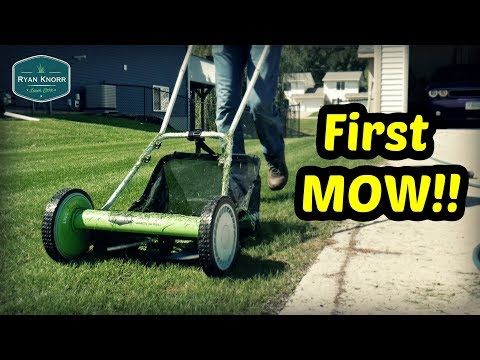
Excell pressure washers are durable appliances that can handle various cleaning tasks. Despite their ruggedness, all pressure washers sometimes have performance-related faults that can be difficult to troubleshoot and fix. …
Read More about Excell Pressure Washer Problems: Engine Troubleshooting & Repair
Pressure washers by Excell are an excellent cleaning alternative for all domestic and professional applications. Some of the most common issues with pressure washers occur with their pump and the …
Read More about Excell Pressure Washer Problems: Pump & Water Troubleshooting With Fixes
Pressure washers by Powerhorse deliver superior performance for cleaning driveways, sidewalks, vehicles, patios, and much more. Despite their utility, a pressure washer is prone to undergo starting problems, be it …
Read More about Titan Powerhorse Pressure Washer Problems: Engine & Motor Troubleshooting & Repair
A pressure washer by Titan Powerhorse can provide an excellent cleaning job for your domestic and professional applications.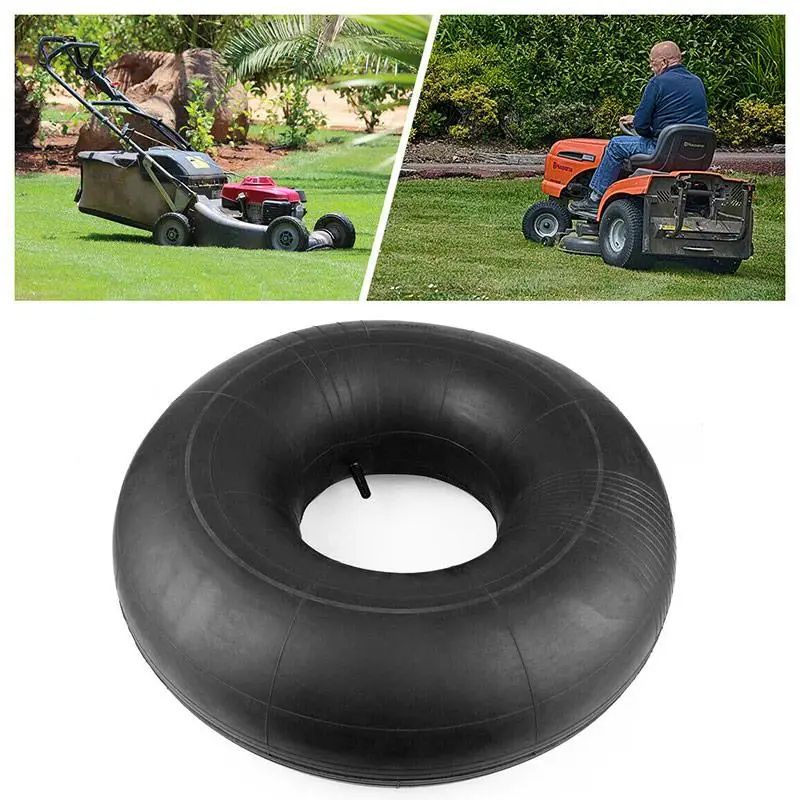 As a pressure washer user, you frequently need to troubleshoot various issues, …
As a pressure washer user, you frequently need to troubleshoot various issues, …
Read More about Titan Powerhorse Pressure Washer Problems: Pump & Water Troubleshooting With Fixes
Hotsy pressure washers are renowned amongst users for their durability and industrial-grade applications. Despite being very few, most of the complaints by users are regarding the pump, water delivery system, …
Read More about Hotsy Pressure Washer Problems: Pump & Water Troubleshooting With Fixes
PowerStroke pressure washers are handy power tools that can be suited for both homeowners and professional cleaners. Most pressure washer users frequently face issues regarding their pump and the water …
Read More about PowerStroke Pressure Washer Problems: Pump & Water Troubleshooting With Fixes
Hotsy pressure washers are well known by users looking for robust and rugged pressure washers.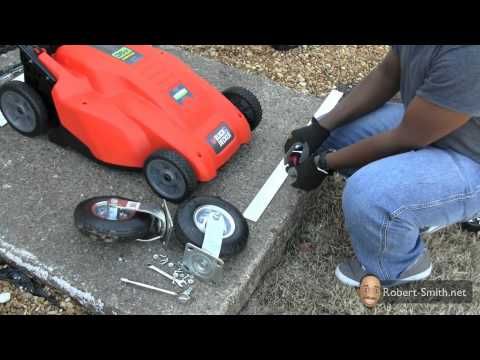 When a pressure washer (gas or electric-powered) faces difficulty starting, most users can find it …
When a pressure washer (gas or electric-powered) faces difficulty starting, most users can find it …
Read More about Hotsy Pressure Washer Problems: Engine & Motor Troubleshooting & Repair
PowerStroke pressure washers are reliable machines that handle all kinds of cleaning jobs. Despite their robustness, almost all types of pressure washers sometimes undergo performance-related issues that can be hard …
Read More about PowerStroke Pressure Washer Problems: Engine & Motor Troubleshooting & Repair
Forks are one of the most straightforward yet efficient garden tools. They are not only helpful in cultivating and preparing the soil for planting and sowing, but they also help to …
Read More about Garden Border Fork: What the pros say
De Walt is a trusted power tools manufacturer that produces gas and electric pressure washers. Despite its reliability, your De Walt pressure washer might occasionally give off some performance glitches …
Read More about De Walt Pressure Washer Problems: Engine & Motor Troubleshooting & Repair
Consumer disputes over the age of tires have not subsided for several seasons.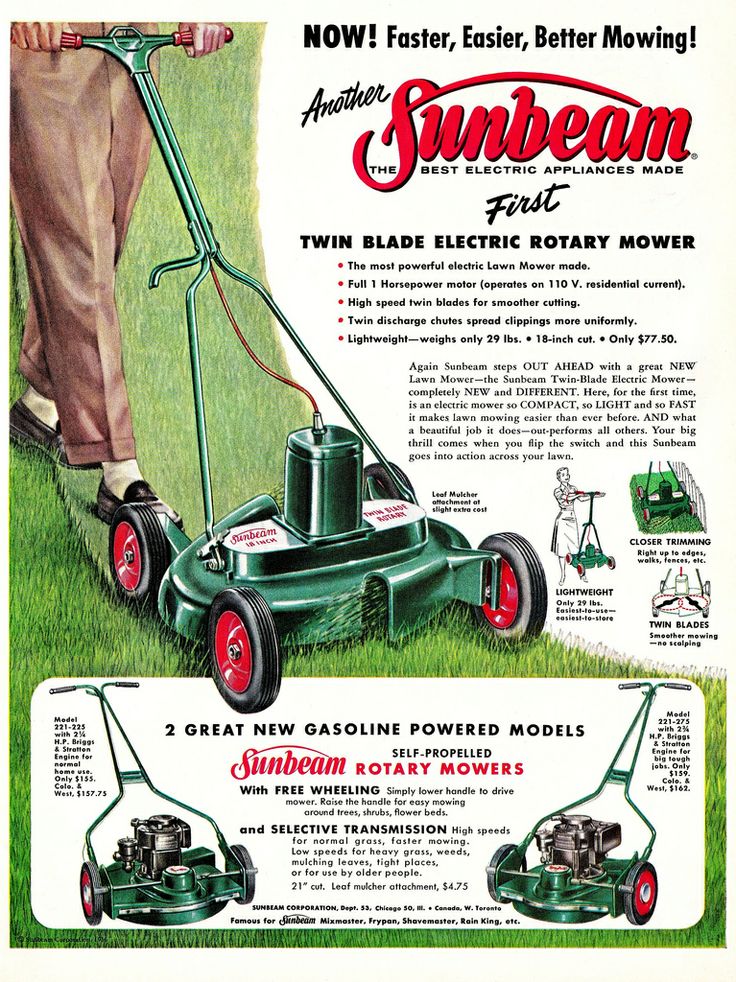 Buyers are excited that the warranty period for tires is limited to 5-6 years according to GOST, and after the expiration of this period, the rubber becomes unusable.
Buyers are excited that the warranty period for tires is limited to 5-6 years according to GOST, and after the expiration of this period, the rubber becomes unusable.
Is this really the case, read this article.
Manufacturers of most brands on their products set Shelf life is 5 years and service life is also 5 years .
The shelf life of a tire is the period during which it retains its performance when properly stored.
The end of this period does not mean that the tires have become unusable . A shelf life of 5 years is given by manufacturers because, by law, they cannot set a shelf life higher than the service life. Tires over 5 years of storage cannot be called damaged or defective, their technical characteristics may be slightly reduced. American researchers argue that the period of storage of "shoes" must be at least 10 years. Experts from Germany are sure that it cannot exceed 6 years.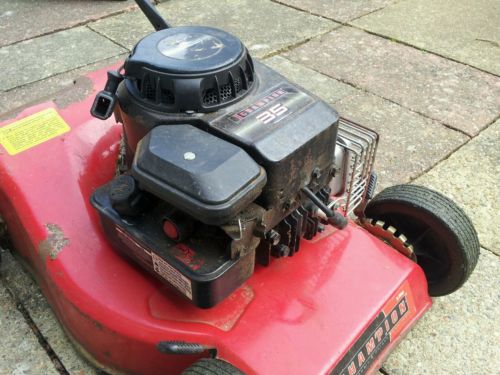
The expiration date of tires is the warranty period during which the manufacturer is responsible for the quality and condition of the tire if it was used for its intended purpose without violating the operating rules.
According to Russian legislation (GOST 5513, GOST 4754-97) , the service life of tires is 5 years from the date of manufacture.
How can I find out the date of manufacture of tires?
You can find out the age of tires by a special DOT code. Tires manufactured after 2000 in the DOT code contain two pairs of numbers, where the first pair indicates the week number of the year, and the second pair indicates the year. Earlier tires before 2000 have 3 numbers in their composition, where the first two digits are the week number, and the last one is the year (see the transcript in the photo).
Determination of the average shelf life of a tire according to GOST and operating conditions.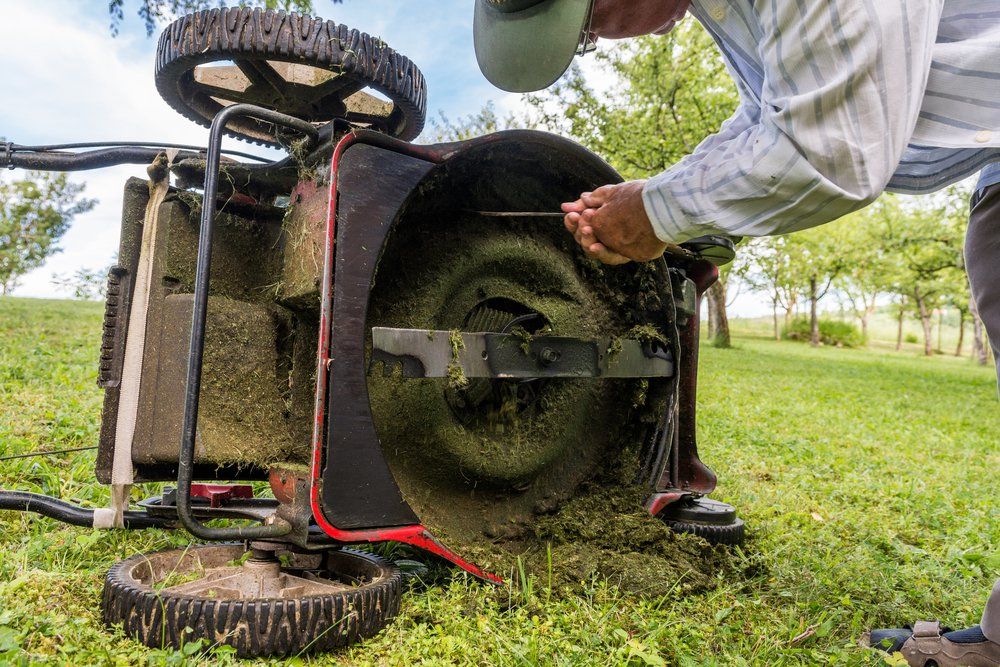
- The symbol ZR denotes tires for high-speed cars. They are recommended to be used at speeds over 240 km/h. up to 6 years
- Tires with the H symbol are used at a maximum speed of 210 km/h. within 5 years.
- The sign S symbolizes the maximum permissible speed of 180 km/h. and operational period of 4-5 years.
Most tire manufacturers do not agree that tire life is limited to 5 years. Each company has its own opinion on this matter. We analyzed several of them and the information they posted on their official websites.
Michelin
The French tire manufacturer Michelin has become famous for its active fight against the perception of the rapid aging of tires as a perishable product. Her information campaign "Tires Are Not Bananas" created a lot of noise in the automotive environment. According to the representative office, several test trials were carried out in Saudi Arabia, South Korea and Germany. As a result of testing, no difference was found between new tires and tires stored for 3 years. They were tested for various characteristics such as rolling resistance, high speed durability, etc. Tires with a year life were approximately equal in performance to 10-year unused tyres.
As a result of testing, no difference was found between new tires and tires stored for 3 years. They were tested for various characteristics such as rolling resistance, high speed durability, etc. Tires with a year life were approximately equal in performance to 10-year unused tyres.
Michelin focuses the attention of car owners on the fact that tires are not a perishable product, their shelf life is not as important as the service life is important, starting from the date the tires are installed on the rims. It is from this moment that the tire is subjected to all tests: pressure, temperature changes, wear, contact with uneven and sharp coatings, etc.
Continental
On the Russian official website of Continental, we found the following information on the expiration dates of tires.
“When a tire is stored in the correct position and under the recommended conditions, it will not lose its original balanced performance for 5 years from the date of manufacture of the tire.
A properly maintained, unused tire less than 5 years old can be sold as a new tire and used normally.
Continental recommends replacing all tires (including spares) with a sidewall date greater than 10 years.
Nokian
The following information is posted on the Nokian official website:
“Tire life is not defined by law, but tires can only be considered “new” if they have been manufactured within the last five years. The recommended service life of tires is six years and the recommended maximum period is 10 years.
The opinion of our specialists, based on many years of experience, coincides with the opinion of manufacturers: the shelf life is 5 years + the service life is up to 10 years. Moreover, more "adult" tires, in our opinion, are of better quality.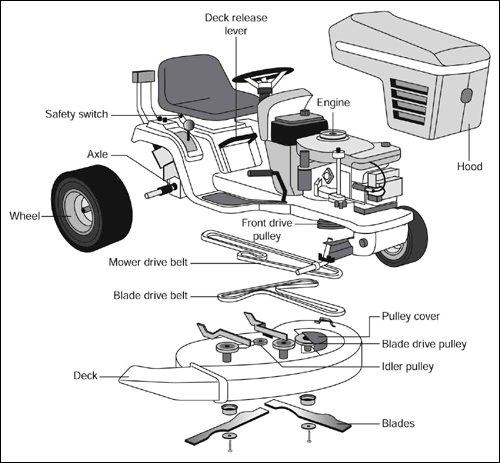
To keep tires as long as possible, they are stored in compliance with all rules and recommendations. The main condition is a cool, ventilated, darkened room away from oils, paints, ozone, and heat sources.
Rubber products tend to lose their performance over the years. To prevent and slow down this process, manufacturers add polymers to the rubber compound. They prevent oxidative processes that occur due to the interaction of protectors with oxygen and ozone.
The following are the main conditions for the proper storage of tires in accordance with GOST 24779-81:
Maintaining a constant regime without sudden jumps, slight temperature fluctuations from -30°С to +35°С are allowed;
Provide a low humidity level of 50-80% in a dry, ventilated cool room;
Avoid direct sunlight, use darkened hangars, shield heat sources;
Keep away from sources of heat;
Tires should not come into contact with corrosive, copper materials.
Avoid kinking, loading or positioning on an uneven surface.
Avoid contact with oils, organic solvents, acids, alkalis, fuels and lubricants on the tire surface. It is forbidden to lay tires on a wet and dirty surface.
In the warm season, when storing tires outside, they should be covered with light-tight material and raised above ground level to ensure ventilation and prevent the occurrence of the greenhouse effect.
Storage on reflective, light and heat absorbing surfaces is prohibited.
Keep away from chemicals, oils, paints, open flames, electric motors that produce ozone.
Used tires must be washed and dried.
Tires without rims should be stored upright.
The service life depends on many factors: the load on the car, the quality of the roads, the driving style, the distance traveled, tire damage, etc. To increase their service life, follow these rules:
To increase their service life, follow these rules:
Check tire pressure every 2-3 weeks. With reduced pressure, tire wear increases by the equivalent of a % reduction. For example, a 15% reduction in pressure can result in a 15% reduction in service life. Inflated tires are less scary.
The wear of the front tires is always significantly higher than the rear ones, so it is recommended to swap them after some time, carefully watching the direction of the tread pattern and the direction of rotation.
Proper alignment of tires in relation to rims. If the direction is not the same, then performance is significantly reduced.
To prevent damage to the sidewalls of tires, avoid close proximity to curbs and high ledges.
Wash off dirt from the surface of the rubber and from deep grooves with special cleaning agents.
Adhere to an even driving style without harsh brakes and quick starts.
Do not overload the car beyond the norm. 20% excess weight leads to a 30% loss of tire life.
Keep the wheels balanced and check the alignment angles annually.
The main condition for a long tire life is:
- high quality products,
- careful operation,
- proper storage of tires in the off-season,
- timely diagnosis.
The age of tires in standard storage is a minor non-determining factor that should not be taken into account when buying them.
Previous article Next article
Car tires - elastic shell mounted on a disc rim. It is the tires that dampen the small vibrations that occur due to imperfect roads and compensate for the inconsistency in the trajectories of the wheels. The characteristics of tires affect: driving comfort, maneuverability and vehicle stability. However, even the highest quality rubber eventually deteriorates. Therefore, every driver should know how to correctly determine the degree of tire wear in order to replace them in time. Car and truck tires have different periods of use, depending on both the initial characteristics of the products and the operating conditions.
However, even the highest quality rubber eventually deteriorates. Therefore, every driver should know how to correctly determine the degree of tire wear in order to replace them in time. Car and truck tires have different periods of use, depending on both the initial characteristics of the products and the operating conditions.
Tires wear out not only due to operational stress. They are characterized by natural aging, since the rubber compound from which the tires are made gradually loses its elasticity and resilience. The use of such rubber leads to a deterioration in vehicle controllability and creates dangerous conditions due to the high probability of tire rupture on the way.
In accordance with GOSTs 4754-97 and 5513-97, the warranty period for car tires is 5 years. Foreign manufacturers claim that the working life of tires is 5-10 years. There are no legislative acts obliging drivers to change tires after this period, but in order to create safe driving conditions, the driver must take into account the recommendations of GOST.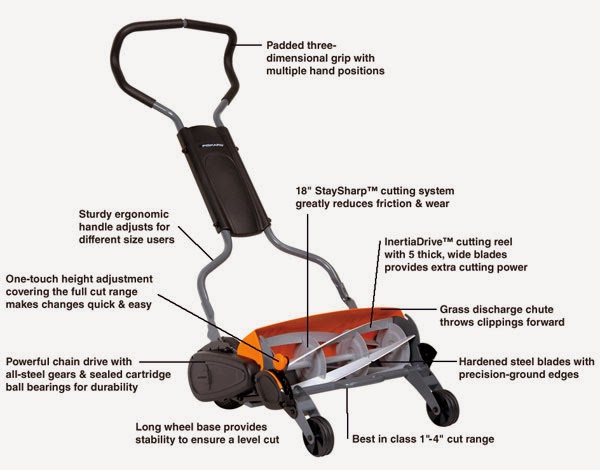 Manufacturers usually set their own warranty periods.
Manufacturers usually set their own warranty periods.
Michelin, Bridgestone, Nokian, Continental, Dunlop, Pirelli, Yokohama:
| Brand | Warranty period declared by the manufacturer |
| Bridgestone | Tire dependent - 3-6 years |
| Nokian
| 5 years |
| Continental | 10 years old |
| Dunlop | Tire dependent |
| Pirelli | Tire dependent |
| Yokohama | 5 years |
| Michelin | 10 years old |
During the warranty period, the responsibility for identified significant defects rests with the manufacturer. The owner of the vehicle will be forced to eliminate defects on his own if there have been:
The owner of the vehicle will be forced to eliminate defects on his own if there have been:
If the vehicle is used intensively, it may be necessary to replace the tires before the end of the warranty period.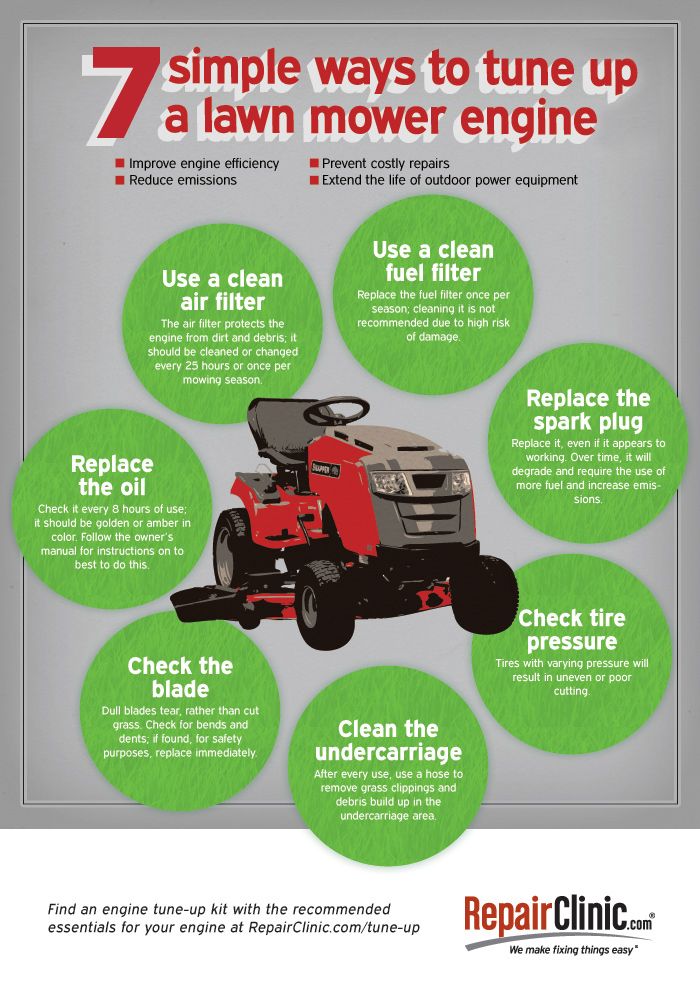 Therefore, regulatory documents establish the mileage after which you should think about replacing tires.
Therefore, regulatory documents establish the mileage after which you should think about replacing tires.
The maximum standard mileage is:
The actual rate of tire wear may differ from the standard values due to a whole list of factors, such as:
 Low-quality products under the influence of abrasive particles wear out very quickly.
Low-quality products under the influence of abrasive particles wear out very quickly. You can determine the need for tire replacement yourself by the following signs:
Table of minimum allowable tread depth for different modes of transport as amended on 01.01.2015
| Minimum allowable remaining tread depth | Type of transport |
| 0.8 mm | L - motorcycles, mopeds, quad bikes |
| 1. | N2, N3, O3, O4 - trucks with a maximum permissible mass of more than 3.5 tons and trailers with a maximum permissible mass of more than 3.5 tons |
| 1.6 mm | M1, N1, O1, O2 - cars, trucks and trailers with a maximum authorized mass of less than 3.5 tons |
| 2.0 mm | M2, M3 - buses |
| 4.0 mm | Winter tires marked M+S, M&S, M S, the amount of residual tread depth does not depend on whether tires are installed on cars or trucks |
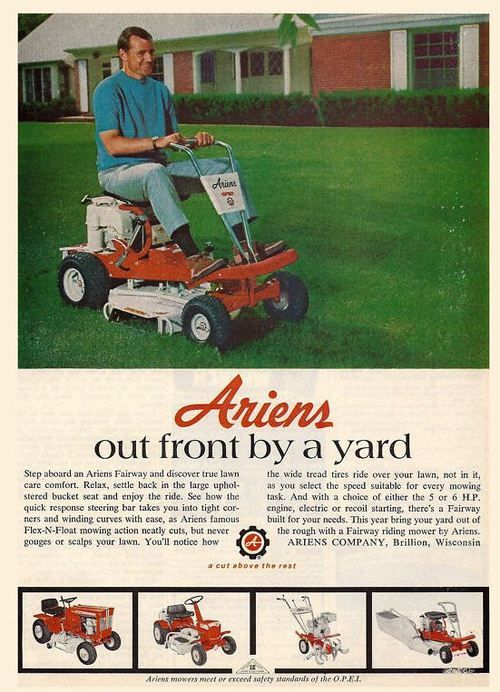 If it does not exceed 50% of the original value, then the tires must be replaced.
If it does not exceed 50% of the original value, then the tires must be replaced. Important! If the outer edges of the tire wear faster, the inflation pressure is too low. Accelerated wear of the central part indicates excessive pressure. Wear on one side indicates a violation of the toe angle. Uneven surface wear is evidence of aggressive driving with rapid acceleration and hard braking.
You can extend the life of your tires by doing the following:
Normative document regulating the terms and conditions of tire storage - GOST 24779-81.